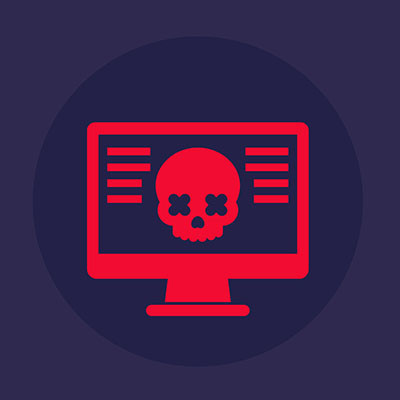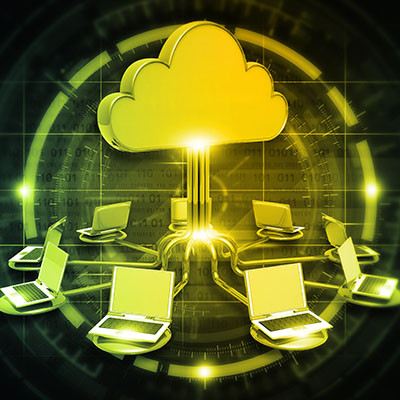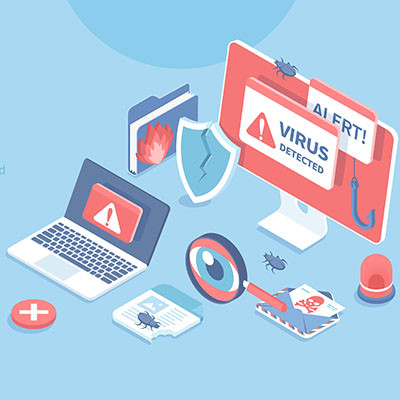Business technology is far from the easiest thing to manage, and it’s mostly because managing technology is not the sole focus of companies (unless you’re us, of course). If you can’t overcome your IT challenges, your business could be held back needlessly. Let’s go over some of the common issues your organization might face with regards to technology management and maintenance.
BlackCSI Blog
Phishing is a serious matter, so serious that it is responsible for a quarter of all data breaches. Therefore, you need to consider it a threat to your business, whether you think these attacks are obvious or not. Phishing is a popular tool in the hacker’s arsenal, so you should be prepared to address it with your staff to preserve your business’ future.
It’s no shock that business executives are already busy enough, but you need to add “knowing more about your IT infrastructure” to that list if you haven’t already done so. It’s critical that you are on the same page as your IT staff, and this relationship will fuel productive relations with both your technology and the staff utilizing it.
Businesses today need to have a robust and secure wireless network, but building one isn’t always that easy. Since there are a lot of machines that use your business’ Wi-Fi—from core machines that are essential to your business’ productivity, to IoT devices that your employees or customers bring onto the network—it is important to understand how best to structure your wireless networks to meet the demands that are put on them.
Sometimes security breaches and hacking attacks come from the most unlikely of sources, even going so far as to utilize trusted applications to infect an endpoint or network. This is the case with a new phishing attack which uses the Calculator application that comes built-in with Windows in a very creative way. This is just one example of how hackers have been forced to innovate to combat the increasingly secure systems which businesses and users rely on today, and it should be a testament as to why you can never be too careful.
We live in a time where technology management is confusing, and it’s mostly because every business has different strengths, needs, and budgets to work around. What works for one small business won’t work for another, and what works for a large enterprise certainly won’t do the trick for a small business. How do you cut through all the noise and get the technology assistance your business needs? The answer: managed IT services.
Customer relationship management software, or CRM tools, are not just for use by large corporations with a large workforce. They can be used by small businesses, too, and there are several benefits for an SMB to use one. Here are some of the many benefits you can expect to receive from using a CRM for your organization.
With all the doom and gloom surrounding cybersecurity, it’s easy to get lost in the negative aspect of technology advancement. That being said, however, we do really love technology, and advancements in smartphone technology, in particular, have made amazing strides and led to great achievements in business and elsewhere. We just wanted to take today to appreciate smartphones and how incredible they are.
Mobile devices are crucial to the productivity and success of modern businesses, but they bring with them countless opportunities for security risks and issues. To combat this, you need to be cognizant of these risks and manage the permissions of your applications. Let’s discuss how you can manage the permissions you grant applications on your Android smartphone.
Your employees will look to you to provide guidance throughout the workday, so you should do your best to use the communication mediums at your disposal to stay in touch with them. Granted, the average business has many different ways of communicating information to employees, especially in the wake of a global pandemic which forced many employees to work remotely. That said, communication is more important than ever; what services or solutions can you use to foster communication and aid your employees in their day-to-day responsibilities?
As we enter the third quarter of the year, now is as good a time as ever to reevaluate how you are spending your IT budget. According to Gartner, your IT spending might actually be increasing, assuming it’s in line with what your organization wants and needs. Are you being intentional with your IT spending? Where are you investing it? Are you spending it on avenues for continued growth? Gartner’s study might yield some interesting ideas which you can call upon to inform your own spending practices.
Whether you are sitting on a warm beach, taking a scenic train ride out into the countryside, or camping at the foot of a mountain, a vacation can be a great way to disconnect from the everyday buzz of work and screens. Although, if you are like me, you probably bring a few screens with you… let’s assume you keep it to a minimum. Either way, it’s important to not set yourself up for failure when you get back.
More small businesses than ever before are selling products, goods, and services to their loyal customers, which means they need ways to process these transactions. Enter the point of sale system, a business’ preferred tool to process transactions in a retail environment. What goes into a successful point of sale system, and how can you use one for your business?
Your business runs on its data, and without an infrastructure to support your operations, your productivity will be dead in the water. Most businesses choose to host their data on servers, and if you know anything about these complex pieces of machinery, you know that managing and maintaining them can be an involved process. Let’s go over some best practices to ensure you manage your server infrastructure appropriately.
Just about everyone has a smartphone these days, but it takes a little know-how and self-awareness to use it in a productive way. Instead of your smartphone turning into a time-wasting device, you can use it to get more work done and reduce your stress levels in the workplace. Here are three helpful tips you can implement to use your smartphone in a better, more productive way.
Virtualizing your business’ software is pretty much just keeping it in an online environment, as compared to your own network infrastructure. This means that it lives in the cloud, delivered to you through the Internet. This approach has proved fortuitous for a great many businesses, so it only stands to reason that virtualizing hardware is a reasonable next step.
Technology management is a challenge for small businesses, especially those that have limited resources at their disposal. There are a lot of decision makers that are under the impression that they cannot afford to take proper care of their technology, so they put it off until their technology starts to fail. So, we ask you this question: if not now, when is the appropriate time to take care of your technology?
Cybercrime is a problem that is only getting worse, and as you might expect, it’s no good for business. It puts your organization in a position where it has to take steps toward securing its infrastructure, whether you like it or not. Let’s go over some of the problems associated with cybercrime and why you need to implement these measures sooner rather than later.




















